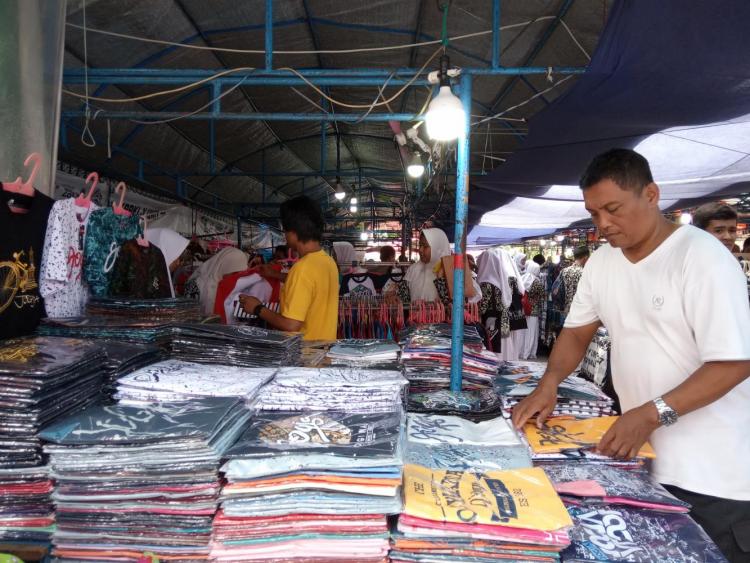Lack Transparency, Relocation Plan Found Questionable

Located in the heart of Yogyakarta, Malioboro street is the tourism icon of this special administrative province. The street is famously adorned by a wonderfully chaotic mix of street vendors, traditional lesehan eateries where guests sit on the ground, and artists of which Yogyakarta has aplenty. Stretching for a mere one kilometer, tourists flock Maliboro to hunt and bargain for cheap souvenirs, food, and clothing from an array of seemingly endless vendors that line both sides of the street.
In 2014, the government of Yogyakarta Special Administrative Province commenced a process to give an area a facelift, making it more organized and neater. Carried out in stages, the project was slated to be completed in 2021. Part of the plan was to relocate the street vendors in the west of Malioboro to a new building that occupied a land where “Indra” cinema used to be – a process that began in 2018. Once relieved of street vendors, the west strip would be expanded and dedicated for pedestrians.
Some revitalization work therefore has been done since 2014, and Malioboro seemed to be just as busy as ever. However, for Maryono, a street vendor in the west strip, the volume of passers-by did not exactly translate into more revenues. He now grossed just IDR 500 thousand (or around USD 36) per day, he said, or 40 per cent less than what he had used to get. Maryono claimed that it was not just him. Other sellers, including food vendors around Beringharjo traditional market also felt the sluggishness. “Tourists come here to take pictures, selfies, instead of buying from us,” he said, offering his observation on Sunday, December 12, 2019.
Maryono was aware of the plan to relocate him and many others to a new facility but had no idea about the stall or floor arrangement. The relocation got him worried that it would only erode his income even further. “I couldn’t even get buyers here. Imagine if I have to move to a three-floor building,” he said.
It was not just the prospect of his income that made Maryono uneasy with the idea. He also felt that he, and the others, had been completely left out in the relocation planning. According to him, none of the public officials of Yogyakarta Special Administrative Province had ever come down to talk about the plan with the vendors – let alone asking for their approval. “I don’t know if they approached other sellers’ associations,” he said, and proceeded to tell that there were 11 associations of street vendors in Malioboro alone.
One thing was certain, Maryono had not been informed of how the relocation would actually take place. To this day, he was still wondering who would get which stall and how, and whether the stalls would be on lease or provided for free. There might also be charges, such as for electricity and cleaning, that sellers like Maryono would have to pay. Right now, these details remained as a question mark. Frankly, Maryono said, the charges would just mean an extra burden for him.
He was hoping that the government would talk with the sellers before they executed the move. In 1990, a forced relocation caused havoc in the area – something that Maryono would rather avoid.
Other than the lack of transparency, the building itself did not appear to fit the bill. It was designed to host 400 sellers, yet the actual number of street vendors in Maliboro’s west strip was way above capacity. This meant that, despite the building’s IDR 62 billion (approx. USD 485 thousand) project value, many of the vendors would not be able to get even a single stall.
The construction process itself was likely to be susceptible to fraud. Journalists Arif Hernawan from Gatra, Haris Firdaus from Kompas, and Bhekti Suryani from Harian Jogja collaborated to investigate the irregularities they had found in the project.
Prior to the investigation, Arif, Haris, Bhekti, and other journalists as well as civil society activists attended an Open Tender training on July 1-3, 2019, in Yogyakarta. The training was jointly hosted by ICW and the National Public Procurement Agency (NPPA).

Together, Arif, Haris, and Bhekti took advantage of opentender.net to explore the project’s peculiarities. Developed by ICW, the website has been programmed with several parameters to assess fraud potential of a public project. Project value, budget efficiency, bidding participants, and project completion timeline were some of the areas that the parameters considered.
Each parameter was scored and assigned to three categories – 1-10 for low risk, 11-15 for moderate risk, and 16-20 for high risk. Based on their assessments, the journalists found that the Yogyakarta project had a high-risk score of 19 – the highest among other public projects in Yogyakarta and eighth highest nation-wide.
Following a four-month investigation, the reports of the alleged fraud have now been published by their respective media outlets between November 20-22, 2019.










